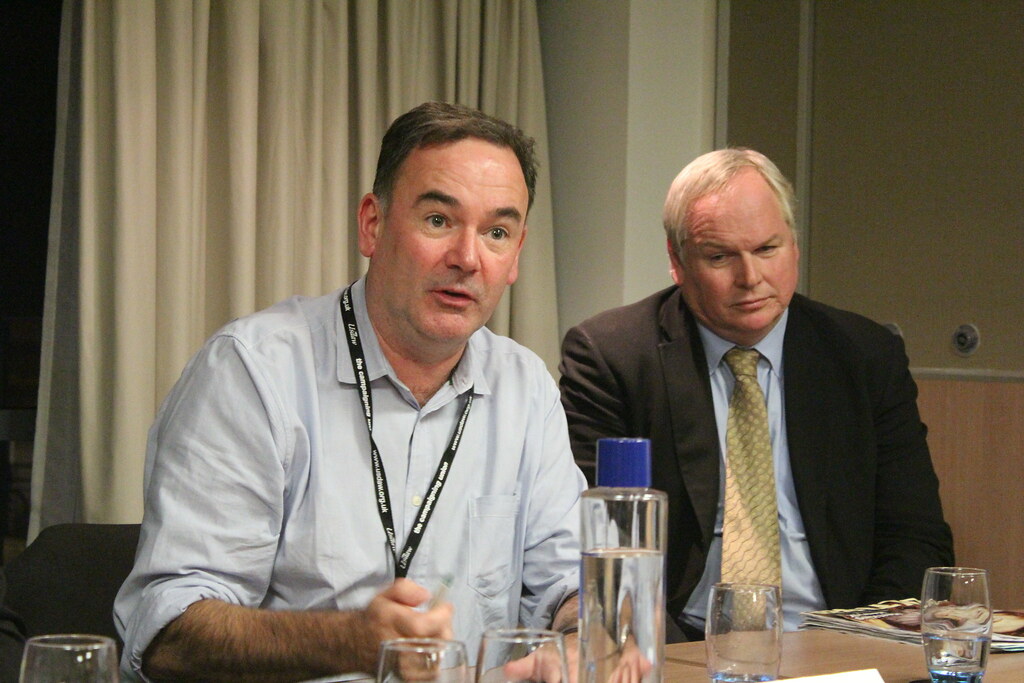The election of leaders such as Margaret Thatcher and Ronald Reagan in the late 1970s and early 1980s promised a society driven by the competition of dynamic entrepreneurship, rather than the impersonal, hulking bureaucracies of state-run enterprises. Instead, there would be competition and the innovation that comes with it, empowering new businesses to topple the old giants of industries by providing better goods and services.
This image of society was understandably appealing, but it is becoming increasingly clear that the last 40 years have not delivered this vision. In fact, we have seen a surprising decline in entrepreneurship, appearing divorced from the dynamic, innovative image of the global start-up economy sold by the winners of the modern economy.
The decline of entrepreneurship in the US
In a new report, the Global Labor Organisation argues that such a trend is the hallmark of an “ossified economy” characterized by stagnation for many with far less innovation or dynamism.
These results may prove surprising to many but the decline in new firms set up by entrepreneurs is well documented by the report, with the issue affecting Europe but the U.S experiencing the most drastic effects as shown by the following statistics:
- The ratio of new firms (being less than one year old) to total firms has declined by around 50% in 1978 and 2011.
- Firms younger than five years old accounted for 39% of all firms in 2006, down from 47% in 1980. These firms employ fewer workers on average and are less likely to experience high growth.
- The share of entrepreneurs in the working-age population has declined from 7.8% in 1985 to 3.9% in 2014.
- The top 1% of firms that hold most patents increased their share of all patents from 35% in 1980 to around 50% in 2015.
- Patenting by firms that register a patent for the first time has declined by more than 50% in 25 years. Patents have become more narrow in scope, less original, and are increasingly used by incumbents to construct “thickets” around their intellectual property, making an entry for new competitors harder.
Conventional explanations
The report describes factors that have been commonly cited in the research literature to explain the decline. These include:
Demographics
One of these is demographics. Smaller working-age population growth will impact the supply of potential entrepreneurs. However, the report points out that the US has had a more dramatic drop in entrepreneurship than other rich countries, although its demographics has been more favourably with the prime age group from which entrepreneurs emerge (35- 54 year olds) remaining stable.
Interest Rates
Interest rates have fallen dramatically since the 1980s allowing large companies to leverage vast amounts of finance, something which has culminated in the phenomenon of “zombie firms”, or companies who would have gone bust in previous eras but have managed to survive in the current environment due to the low cost of servicing debt. The result is a market congested by old, unproductive businesses that refuse to make way for healthier competitors. According to an analysis by Deutsche Bank, nearly one in five publicly traded companies in the US are zombie firms, which is twice as much as in 2013.
Market Concentration
Three out of four industries in the US have witnessed increased market concentration, where the share controlled by the largest firms increases. There is good reason to believe that this was not caused entirely by greater efficiencies achieved through economies of scale.
Instead, certain regulations have allowed already large firms to consolidate their market share and protect themselves from competitors. The logic follows that by creating an artificial barrier to entry for new competitors, inevitably, both new firms have a far lower chance of succeeding in the long term, and potential entrepreneurs are deterred by the barriers to entry created by regulatory regimes. Small firms may also struggle with the regulatory burden that larger firms can handle.
This argument includes criticism of how intellectual property can be protected in an anti-competitive sense by larger, older businesses. The legal system allows companies to enshrine their technological advantages in law over smaller, newer competitors.
Regulatory burden
Finally, there is a related factor of the regulatory regimes in most Western countries being hugely complex, adding not just larger entry costs for potential entrepreneurs but also a hugely time-consuming process to abide by them. This is associated with zoning restrictions, weakened anti-trust enforcement, occupational licensing, and stronger employment protections. It is however suggested that this is at most one of a number of explanations for the trend, with it both being contested in research and unlikely to cause the regulatory burden is a major contributor to the trend.
Have we been ignoring the demand-side explanations?
The report makes clear that these largely supply-side explanations have been dominant in research despite being somewhat limited. Meanwhile, explanations that understand this trend in terms of depressed demand have gained too little attention.
Declining population growth
As opposed to looking at the impact of demographics from a perspective of reduced supply of potential entrepreneurs, a population that is growing at a slower pace and aging means lower aggregate demand. The purpose of every firm is to provide goods and services that its customers want to consume – if the growth in the number of potential customers and their ability to consume slows down, the incentives to form firms to satisfy their needs also decline.
Rising Inequality And Declining Position Of Labour
The report points out one avenue for future research is how rising inequality and declining labor share has, in contrast to much of the rhetoric of politicians, occurred alongside the decline in entrepreneurship.
In addition, the decline in labour’s share of GDP has been argued to be due to four factors: the increasing ability of technology to do jobs previously performed by workers, the larger labour pool available to firms due to globalisation, the weakening of labour unions and labour regulations and the decline in population growth. This weakens aggregate demand, as more money in the pockets of those on lower incomes tends to get spent, whereas more money in the pockets of those who are on higher incomes tends to get saved. Many business owners are critical of measures such as increasing the minimum wage, as they can see the immediate effect of having to pay more for their employees. However, they might want to reconsider their position, as the less immediate and obvious impact of having customers that are able to spend more might be in their long-term interest.
While it might seem intuitive that weakening the position of labor relative to capital would incentivise more people to become entrepreneurs, the opposite might be true. A depressed labor market means that it’s riskier for workers to quit their jobs and start a business or join a start-up, as it’s harder to get back into the labour market if the new venture fails.
Rising energy costs
Since the industrial revolution, the cost of energy declined until the 1973 oil crisis. This dramatic change of trajectory coincided with the decline of entrepreneurship, and there are reasons that suggest this is not a coincidence. The fossil fuel “EROI” (energy return on investment), which refers to the amount of energy required to produce more energy, has been getting worse. In other words, it’s more expensive to extract a barrel of oil than before, for example.
Negative Scale Effects
It might be that the lowest hanging fruits have already been picked. Take for example Moore’s Law, which refers to the doubling of computer chip density every two years. The number of researchers required today to achieve such doubling is more than 18 times larger than the number required in the early 1970s.
The main reason for diminishing returns of innovation offered by the report has to do with “product proliferation”, which refers to the increasing diversity of goods and services sold. This leads to firms becoming more specialized, which has two impacts. First, if the goods or services sold by the firm are more specialized, it requires more R&D to start a firm. Second, the uniqueness of firms and their products and services results in the R&D of one firm having less benefits for other firms as the economy, meaning that the overall benefits of R&D decrease.
Conclusions
The Global Labor Organisation’s report highlights a failure of the economic consensus borne out of the 1980s to create a dynamic, innovative market economy. Instead, the reality is a rigid, stagnant economy that rewards established enterprises and holds back those that could innovate, to the detriment of workers and aspiring entrepreneurs alike. The report concludes by arguing that none of the explanations holds a complete explanation and the decline is most likely an outcome of many different factors.
This trend is not limited to just the US and seems to plague the western economies as a whole, but not without exceptions. In future articles, we at Mutual Interest will seek to offer some solutions on how to help reverse this trend. We believe that not only do we need more businesses, that we need more variety in how businesses are structured. Instead of just conventional capitalist shareholder businesses, we need to encourage different forms of enterprises that share ownership and governance rights in more equitable and accountable ways.
We are free online media cooperative owned democratically by the readers and the writers. Join us now and become a founding member. As a member you can vote for your favourite articles and we will distribute our funds accordingly.





